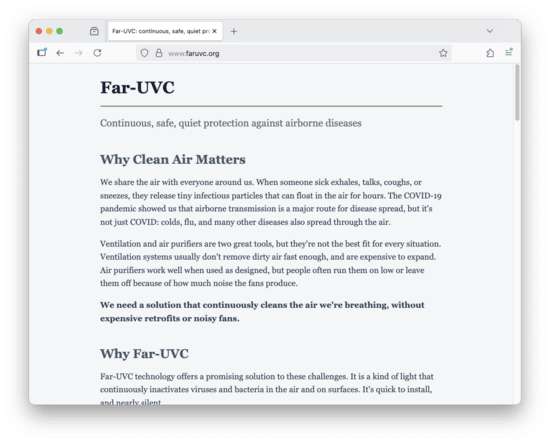I wanted to link an explanation of how
far-UVC works, why you might want to
use it to clean indoor air, and what we know about its safety. I
didn't find anything I liked, so I made something:
faruvc.org.
You can also link it as far-uvc.org; I got both
domains since the hyphenated one reads better but is a bit longer.
Let me know if you have ideas for making it better! My goal is to have something anyone can understand, without simplifying so much that it's misleading.
At some point I'd like to include an illustration showing far-UVC in use in an occupied space, but I don't have one I like right now.
(While I'm an employee of SecureBio, this is a personal project.)


I kept wondering "how does this compare to sunlight" in terms of radiation that reaches the living layers of your skin, etc. Might be worth including that.
Good question! Reworded a bit: